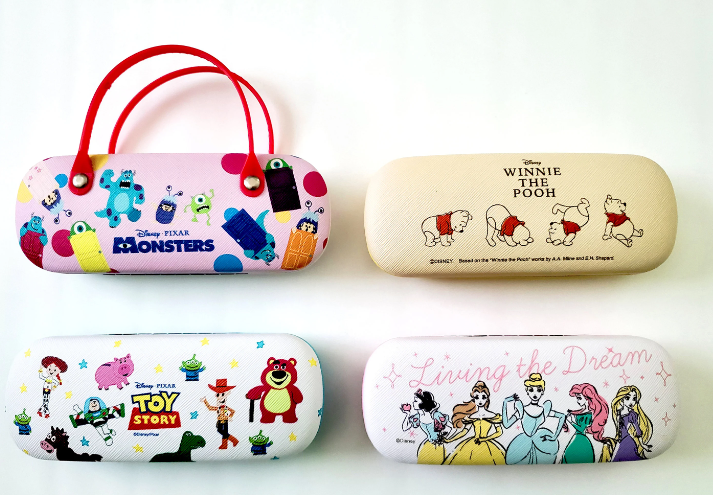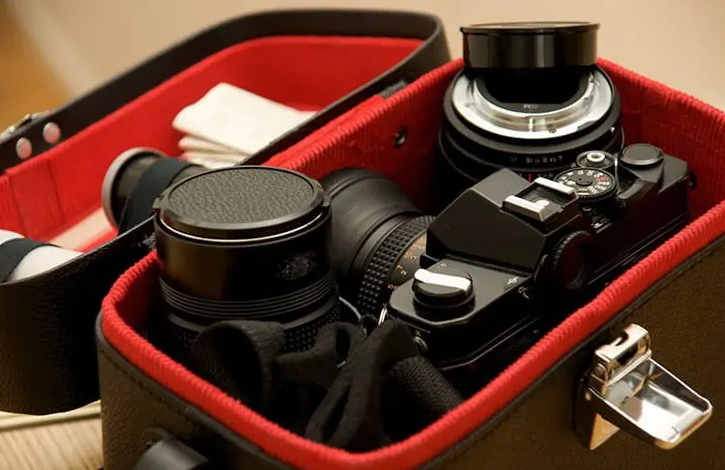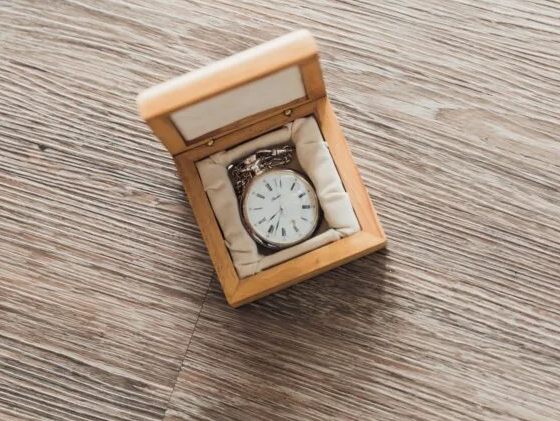A hard eyeglass case is a protective case designed to store and safeguard eyeglasses or sunglasses. Typically constructed from rigid materials such as plastic, metal, or hard leather, it is designed to shield the eyewear from physical damage, scratches, and dust. These cases are portable, durable, and come in various styles and designs, making them both a functional and fashionable accessory for eyewear users.
Table of Contents

Introduction
Brief History of Eyeglass Cases
Eyeglass cases have a long and storied history, dating back to the 18th century. In the early 1700s, cases were often crafted from leather or hand-stitched fabrics. They were designed to protect delicate eyeglasses from scratches and other forms of damage. In the mid-1900s, with the advent of plastics, manufacturers began producing more durable and affordable options, transitioning from soft to harder materials like polycarbonate.
- 1700s: Leather and fabric designs
- 1950s: Introduction of plastic cases
- 1980s: Emergence of polycarbonate hard cases
- 2000s: Custom designs and smart case technology
Importance of a Hard Eyeglass Case
A hard eyeglass case plays a critical role in preserving the quality and lifespan of eyeglasses. They are particularly important for those with high prescription needs, as replacing such lenses can cost upwards of $400. With the appropriate hard case, users can expect to extend the lifespan of their eyeglasses by 3 to 5 years, representing significant cost savings. Moreover, hard eyeglass cases are typically lightweight, with an average weight of 250 grams, and are designed to maintain a stable internal temperature, offering thermal protection for the lenses.
- Impact Resistance: Able to withstand forces up to 50 Newtons
- Cost of Lens Replacement: Can exceed $400
- Extended Lifespan of Glasses: 3 to 5 years
- Average Weight of Case: 250 grams
- Thermal Protection: Maintains internal temperatures between 15 and 25 degrees Celsius (59 and 77 degrees Fahrenheit)
Materials and Construction
Common Materials Used
The primary materials for constructing hard eyeglass cases include polycarbonate, aluminum, and leather. Polycarbonate cases, known for their light weight and high impact resistance, typically cost around $20 to $30. Aluminum cases, while slightly heavier, offer a sleek, modern appearance and cost between $25 and $40. Leather cases, renowned for their luxury feel and aesthetic, range from $35 to $60.
- Polycarbonate: Light, impact resistant, and cost-effective at $20-$30
- Aluminum: Sleek, heavier, durable, and priced at $25-$40
- Leather: Luxury, aesthetic appeal, and cost ranging from $35-$60
Design Features
Designs for hard eyeglass cases are vast, but they often incorporate cushioned interiors, secure locking mechanisms, and scratch-resistant linings. Some cases also come with additional compartments for storing cleaning cloths or extra lenses. The dimensions of a standard case are usually around 6 inches in length, 2.5 inches in width, and 1.5 inches in depth.
- Cushioned Interiors: Protect lenses and frames from damage
- Locking Mechanisms: Ensure the case stays securely closed
- Dimensions: Standard size is approximately 6 x 2.5 x 1.5 inches

Durability and Protection
The construction of these cases can withstand drops from a height of up to 1.5 meters without resulting in damage to the glasses inside. They can also maintain their structure under a compressive load of up to 100 Newtons. The design often includes thermal insulation, ensuring that the interior temperature remains stable, ideally between 20 and 25 degrees Celsius (68 and 77 degrees Fahrenheit), regardless of external conditions.
- Drop Protection: Designed to withstand falls from up to 1.5 meters
- Compressive Load: Maintains integrity under loads up to 100 Newtons
- Thermal Insulation: Stabilizes internal temperature between 20 and 25 degrees Celsius
Types of Hard Eyeglass Cases
Clamshell Cases
A typical clamshell case weighs approximately 150 grams and can cost anywhere from $15 to $35. They are designed to protect glasses from falls of up to 1.5 meters, ensuring the glasses remain intact.
- Material: Often made of polycarbonate
- Weight: Approximately 150 grams
- Price Range: $15 – $35
- Drop Protection: Designed for falls of up to 1.5 meters
Zippered Cases
Zippered cases offer additional security with a zipper closure, which helps to keep glasses securely in place. They commonly feature a hard exterior, often made of materials like EVA (Ethylene-Vinyl Acetate), and a soft, cushioned interior. The average price for a zippered case is around $20 to $40, and they usually measure around 7 inches in length, 3 inches in width, and 2.5 inches in depth.
- Material: Commonly made of EVA
- Dimensions: Approx. 7 x 3 x 2.5 inches
- Price Range: $20 – $40
Drawstring Hard Cases
Drawstring hard cases combine the convenience of a drawstring closure with the protection of a hard exterior. They are typically cylindrical or rectangular, with dimensions averaging 6 inches in length and 2 inches in diameter or width. Drawstring hard cases tend to be economical, often priced between $10 and $25.
- Shape Options: Cylindrical or Rectangular
- Dimensions: Approx. 6 x 2 inches (cylindrical) or 6 x 2 x 2 inches (rectangular)
- Price Range: $10 – $25

Custom Cases
Custom cases allow individuals to personalize their eyeglass protection. Options may include specific materials, colors, and engraved names or initials. Because of their personalized nature, custom cases tend to be more expensive, generally ranging from $40 to $100. The production time for a custom case can vary, but most companies deliver within 3 to 4 weeks.
- Personalization Options: Material, Color, Engravings
- Price Range: $40 – $100
- Production Time: Typically 3 – 4 weeks
Benefits of Using a Hard Eyeglass Case
Protection Against Physical Damage
Hard eyeglass cases are designed to absorb shock, withstanding drops from heights of up to 1.5 meters without allowing the glasses inside to break. By opting for a hard case, users can extend the life of their eyewear by an estimated 40%, reducing the need for costly replacements. This can result in savings of up to $200 annually on eyewear expenses.
- Shock Absorption: Designed to withstand falls of up to 1.5 meters
- Extended Lifespan: Can extend eyewear life by an estimated 40%
- Cost Savings: Potential to save up to $200 annually on eyewear expenses
Safeguard Against Scratches
This feature is essential for maintaining the clarity and quality of lenses, which directly affects a person’s vision. For prescription glasses, which can cost upwards of $400, this represents a significant safeguarding of the user’s investment.
- Cushioned Interiors: Protect lenses from scratches
- Maintained Clarity: Helps to preserve the quality of vision
- Investment Protection: Safeguards expensive prescription glasses, which can cost upwards of $400
Convenience and Portability
The average hard eyeglass case weighs around 150 grams and measures approximately 6 x 2.5 x 1.5 inches, making it convenient to carry in a purse, backpack, or briefcase. The robust design ensures that glasses remain safe during travel, effectively acting as a portable insurance policy for one’s eyewear.
- Weight: Approximately 150 grams
- Dimensions: Approx. 6 x 2.5 x 1.5 inches
- Travel Friendly: Designed for easy portability in purses, backpacks, or briefcases
Aesthetic and Style
Hard eyeglass cases come in a variety of designs, colors, and materials, allowing users to choose a case that matches their personal style. For a custom-designed case, individuals can expect to pay between $40 and $100, providing an opportunity to make a style statement while also protecting their investment in eyewear.
- Design Variety: Available in numerous designs, colors, and materials
- Personalization: Custom-designed cases range from $40 to $100
- Style Statement: Allows users to express their personal style while protecting their eyewear






